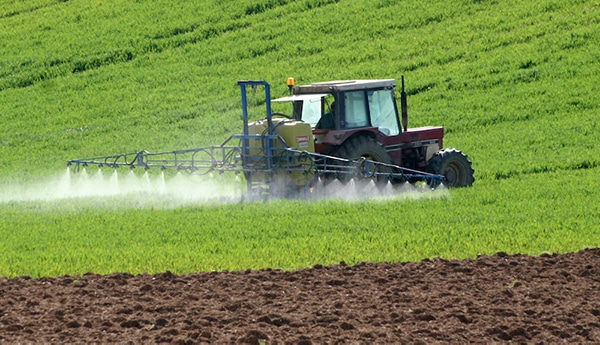From the Mallee to Gippsland, regional Victoria is home to nine Regional Partnerships which, for the past two years, have been giving regional Victorians a real say on issues that matter to them.
Each Partnership has listened to the voices of thousands of people living and working in its region, with communities consulted through an annual Regional Assembly, online surveys and year-round engagement.
Priorities have been identified and conveyed by the Partnerships to the highest levels of the Victorian Government. And Government has listened, learned, and is taking action, together with local communities.
Successive Victorian Budgets have supported a number of Partnership priorities with, for example, $45 million for regional digital connectivity, investments in regional roads and rail, regional schools and TAFE, in health prevention initiatives, food and fibre plans, the Victorian Rural Women’s Network, and in a new Cross Border Commissioner (see section below – What’s being achieved?).
But Partnerships are about more than securing Budget outcomes, explains Jaala Pulford, the Minister for Regional Development and Agriculture.

Rather, she explains, “Regional Partnerships are helping to transform the way communities work with Government and how Government delivers services in regional Victoria.” Each Partnership has been active in bringing together different local groups and different levels of Government in their regions, including representatives of the Commonwealth through Regional Development Australia participants, and of local Government with council CEOs on the Partnership.
“Local solutions are often the best solutions. What works in Melbourne doesn’t always work in regional cities,” explains Minister Pulford. “What works in regional cities doesn’t always work in smaller rural towns. Regional Partnerships offer us invaluable insights into how we can better design public policy so that it fits the needs and expectations of diverse communities.”
What are regional communities telling Partnerships?
Each Regional Partnership has listened to its community and taken its priorities to the Victorian Government. These priorities are published and can be found on the Regional Partnerships’ web pages (http://www.rdv.vic.gov.au/regional-partnerships, then follow the links to individual Partnership pages). Among the top priorities, identified by several Partnerships, are:
- The importance of quality education and training;
- Growing tourism in the region to take advantage of natural assets;
- Supporting agriculture to innovate and remain competitive;
- Growing the regional economy through sustainable jobs;
- Investing in health prevention to improve the wellbeing of regional Victorians.
The need for improved connectivity – both digital and transport;
What’s being achieved?
The last two Victorian Budgets have brought support for a number of across-Partnership priorities including $45 million for regional digital connectivity, with each Partnership now working with Government and the community to develop a digital plan tailored to the region’s needs, and investments in regional roads and rail.
Individual Partnerships have also won support for their priorities including $60 million for TAFE redevelopment in Gippsland, investments in developing the Shipwreck Coast, $5 million for the Healthy Heart Initiative to help more people be more active more often in Loddon Campaspe, $800,000 to establish a Cross Border Commissioner, funding to develop a business case for a Networked Grains Centre of Excellence in Horsham, $153.2 million for the Geelong City Deal including the development of the Geelong Convention and Exhibition Centre and revitalising central Geelong $500,000 to build the Prevention Lab in Central Highlands to encourage healthy eating and exercise, huge investments in rail to Shepparton and $12 million for the North East Cycling Optimisation Project.
But the Regional Partnership Priorities are not all about big funding. In many instances, it’s about bringing the right people together and empowering change.
For example, in Wimmera Southern Mallee, the Partnership is working with the Department of Education and Training to run trials to develop new approaches to delivering early years services in regional and rural areas.
There are also a number of innovative local initiatives underway in the agriculture and farming sector.
For example, in Goulburn, the Partnership is working with Agriculture Victoria, the Department of Environment, Land, Water and Planning and climate change and policy specialists, to support the Goulburn region to develop world’s best practice agriculture and climate thinking through the application of climate change research and development on farm. The project is examining the situation of climate change in Goulburn with a particular focus on agriculture and the uptake of leading climate change research and development, and is identifying gaps and opportunities and encouraging practice change at the producer level and along the supply chain.
In Wimmera Southern Mallee, work is underway to develop a business case for a Networked Grains Centre of Excellence in Horsham, while in Gippsland, the Government is investing $700,000 to establish a food and fibre taskforce to drive the development of the Gippsland agriculture agenda. A $500,000 investment in food and fibre in Great South Coast is driving an action plan to be realised in that region, while in Central Highlands, the drive is towards developing a hub for premium produce in the region.
To hear more about these and other initiatives, take a look at the Regional Partnership webpages (http://www.rdv.vic.gov.au/regional-partnerships). You can read all about Budget outcomes on each Regional Partnership web page.
Article kindly provided by Regional Development Victoria.






